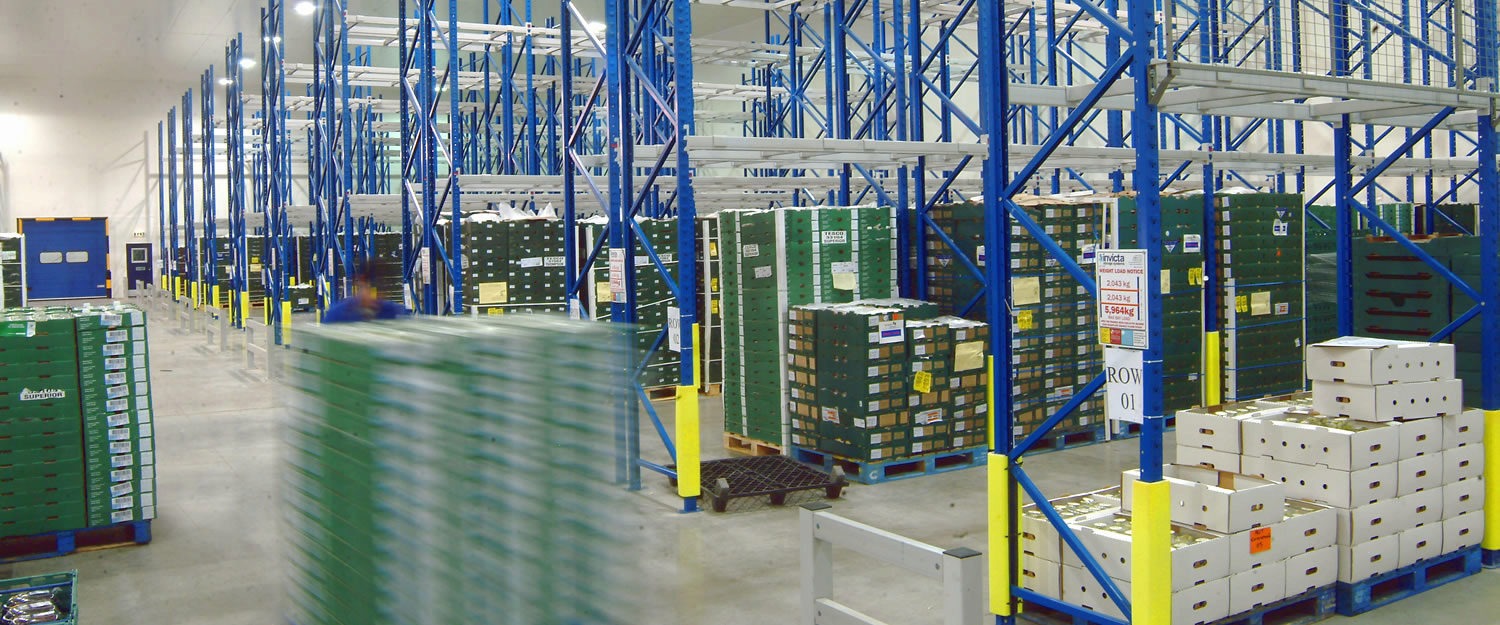For your information
You are being redirected to one of our divisional subsites which contains more detailed information on the required division. To navigate back to the main Invicta Group site, please click the link found in the footer at the bottom of the page.
5 Reasons You Need To Start Optimising Your Storage Space
7th January 2020
From Amazon to overpopulation
Quick Quote
Contact Mick Coyne
To get a quotation or arrange a free site survey - Call Mick Coyne on
-
 UK
UK
Current location:
Quick Quote
Contact Mick Coyne
-
 UK
UK
Current location:
We hate to be harbingers of the storage apocalypse, but 2018 could be the year when optimisation really starts to matter. Up until now, the cost of upgrading and reorganising a storage area – be it a warehouse or a simpler storeroom – was often outweighed by the practicalities of halting or scaling back operations in order to complete the work.
As various factors relating to the state of global trade, the economy and even the environment weigh on businesses however, optimising your storage space has never been more important. Here are five factors creating this impetus for change, and the reasons they could force your business to reconsider its storage solutions.
The rise of Amazon
Where Amazon goes, Amazon conquers. There have been stumbling blocks along the way – the EU’s Competition Commission has imposed big fines on multiple tech companies – but its progress has been more or less unimpeded, particularly in the UK. The company has used the islands as a testbed for its drone technology, and has been dominating warehouse space for several years.
More than a quarter of all UK warehouse space now belongs to Amazon, and the company added more than five times as much new space as its fastest growing rival in 2017. This equated to almost a million square feet of storage space, an area the same size as Vatican City, and contributed to a total (as of 2017) of almost 20 million sq/ft.
Rival companies can continue to compete in this environment, and we’ve seen a shift away from Amazon by some consumers over their taxes affairs and other issues. But the key problem is that they just keep buying up prime land and warehouse space, with new space for smaller companies likely to get pricier as a result. It will only become more important to make better use of your existing warehouse space, either through reorganising or filling vertical space with mezzanine floors.
Overpopulation
Most of us have heard that overpopulation is a major issue, and particularly in combination with the threat of climate change (detailed below). The world’s population has grown by almost six billion people in the last one hundred years, and our appetite for stuff is growing too. More people will be sharing less space, particularly as populations try to solve demographic shifts (such as the ageing populations in Japan and China) by encouraging more births.
The natural end point of more people in less space demanding more things is that space will have to be used more intelligently. This is potentially great news for businesses, who will have to supply more items to more people; but it also presents a challenge for storage solutions. Existing space will have to be used in a more intelligent way, with higher density options and greater efficiency of retrieval and delivery, leading to a faster turnaround on ingoings and outgoings.
One of the other potential positives of overpopulation (for businesses at least) is population density. The trend towards dense cityscapes is only likely to increase as cities become smarter, and offer conveniences that more isolated areas can’t match. Having more customers in a smaller area – and using the advances in logistics below – could be a major boon for companies looking to compete with Amazon’s distribution network.
Climate Change
The consensus on climate change is well established, but it’s going to take more than banning straws to solve it. Unfortunately, the damage done already is such that some fallout seems inevitable, as record temperatures this year can attest. Such a dramatic shift in the global climate will affect all aspects of life, and storage is not necessarily an exception.
Cold storage will have to use more energy to stay cold, which will invariably increase costs (as will the shift from fossil fuels to renewables). The land used for warehouse space may also become more limited, as arable land in general is scorched by the sun. While this may not impact on the UK any time soon, it is expected to affect parts of Europe, and is already leading to headaches (both literal and metaphorical) in other parts of the world, which you may be increasing distribution to after Brexit.
You may also want to consider the impact of your warehousing or other storage space on the environment. These large structures can require climate control, vast electrical subsystems and all manner of vehicles, winches and pulleys to transport, locate and load goods. Optimising your storage space doesn’t just need to be about increasing the usable space – it can also be about making the space more energy efficient.
Brexit
You knew this was coming. The true impact of Brexit isn’t likely to be felt for a few years, and we’ll all keep fighting about it until then. UK businesses however are already dealing with the effects, namely in staffing and stockpiling. A number of articles have highlighted the need to safeguard against the effects of a ‘no deal’ Brexit in particular, with the possibility that trade barriers could lead to shortfalls in all kinds of products.
While not everything can be stored ahead of time – and indications are that not enough businesses are currently opting for this contingency – it’s becoming increasingly likely that businesses will have to increase their stock of key items that can only be imported, in order to avoid heavy tariffs and other barriers to trade. The NHS and pharmaceutical companies such as AstraZeneca are already stockpiling medicines, while Airbus has ramped up its storage of key components.
This need to ‘play it safe’ and keep supplies in reserve in case trade breaks down is worrying for any number of reasons. For pragmatic businesses, though, it also creates a demand for increased storage, which has to be balanced with the capital that gets tied up in buying extra inventory. Optimising your existing storage could be the best way to increase your capacity without breaking the bank.
Logistics
If there’s a positive to the rise of Amazon and online shopping, it’s arguably in the logistics of warehouse deliveries. Vast sums of money have been invested in improving the modes of delivery and item retrieval, to the broad benefit of all kinds of businesses. It’s likely that it won’t be long before all warehouses are deploying drones and robots to carry out physical labour, reducing costs and freeing up personnel for more pressing tasks.
The obvious consequence of this, however, is that many warehouses will need to be completely redesigned. Racking will need to be navigable by automated vehicles, with the spaces between shelves altered and signals available (either wireless or QR code style) to inform the robots where they are, where to go and what to look for. This will also require the installation of wireless base stations, and a place to monitor and intervene in the automated tasks if things get out of hand.
This also applies to loading and deliveries, which may also be carried out by robots and drones. In Amazon’s vision of the future, a bizarre drone hive will serve as a base of operations for thousands of buzzing robots, all dropping packages into gardens and peering through the windows. Who knows what sort of structures we might need to create, or modifications we might need to make to warehouses to make this happen – but opening a window to let the drone in probably won’t suffice.
Accreditations & Affiliations







Start your project
Tell us about your project. Please complete this form. One of our sales team will come back to you with more details. If you prefer, you can drop us an email.




Share/Like this page